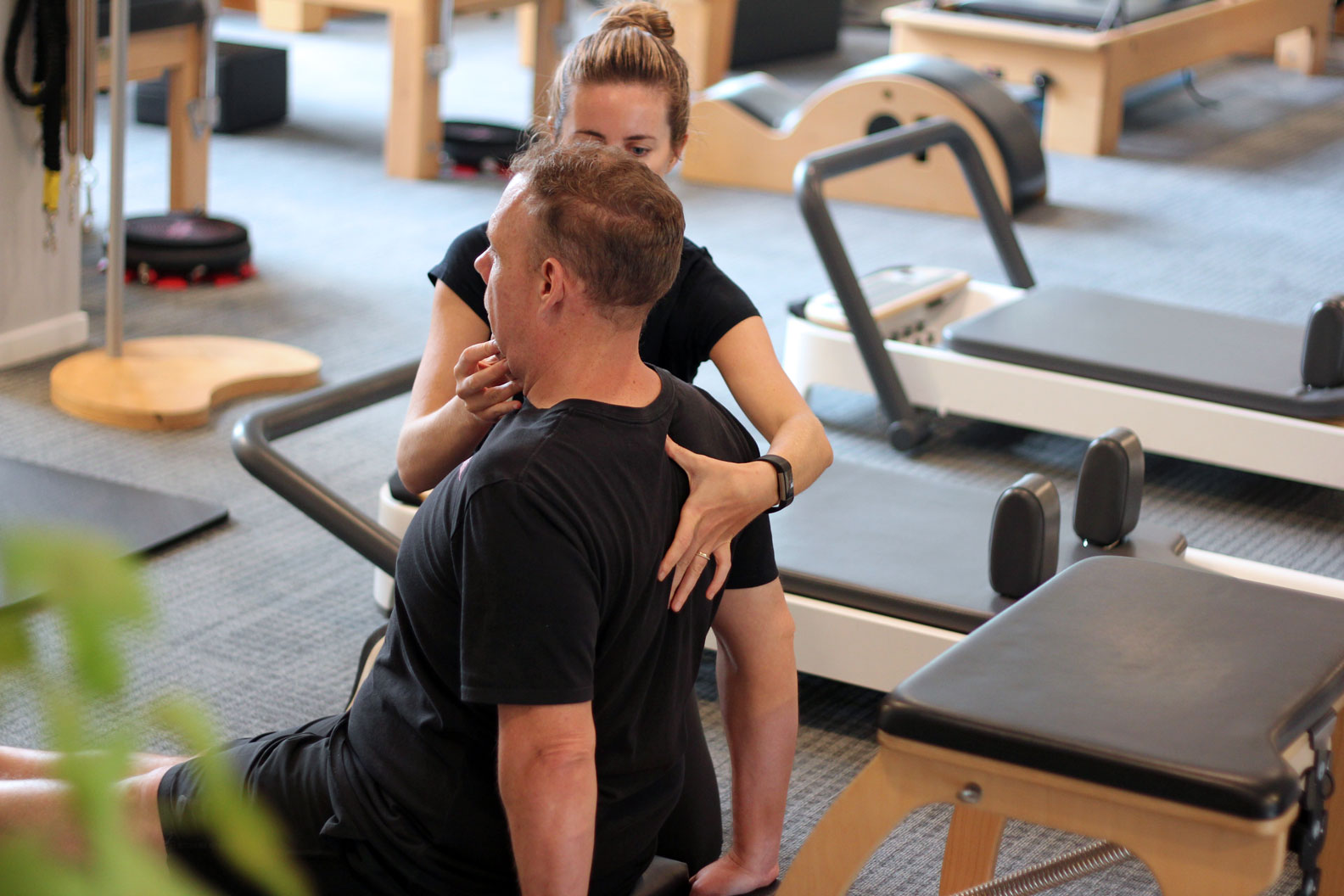
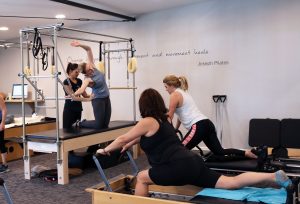
The Framework: The Foundation of a Perfect Outfit
The Human Body: Your Personal Framework
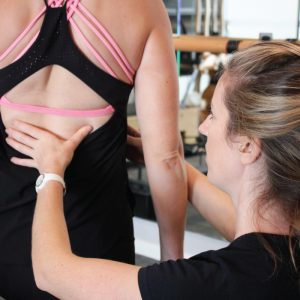
Pilates: Tailoring Your Body’s Foundation
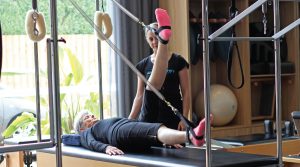




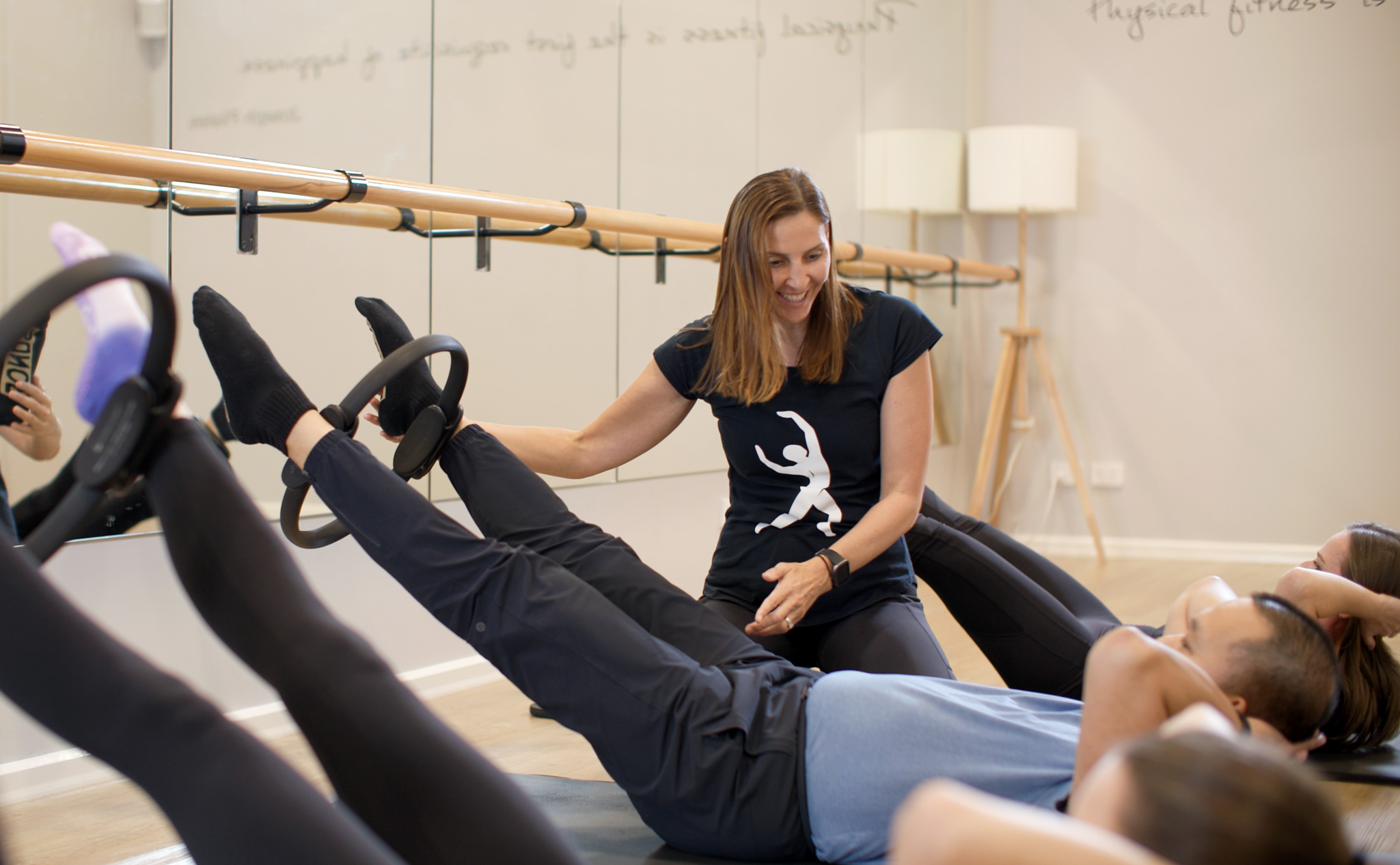
When you think about Pilates, the first things that often come to mind are strength, flexibility, and improved posture. But there’s an interesting analogy that can deepen our understanding of why Pilates is so effective: it’s like reinforcing the chassis of a car.
In a car, the chassis is the frame that supports the vehicle’s entire structure. It’s the backbone that holds everything together, ensuring stability, balance, and better posture. A well-constructed chassis absorbs shock, distributes weight evenly, and keeps the vehicle running smoothly, even on rough roads.
Without a strong chassis, a car would be prone to misalignment, excess wear on parts and a higher risk of breakdowns. The chassis isn’t just important; it’s essential for the vehicle’s overall performance and longevity.
Our bodies, much like a car, rely on a strong, stable frame to function properly. In this analogy, the muscles in the abdomen, lower back, hips, and pelvis serve as the chassis of the human body. These muscles provide the foundation for movement, stability, and better posture.
Just as a car’s chassis supports its engine, wheels, and other components, these muscles support our spine, limbs, and internal organs. They are crucial in maintaining proper posture, preventing injuries, and facilitating efficient movement.
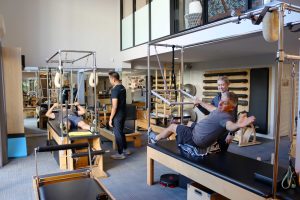
Pilates is a method of exercise that focuses on strengthening these crucial muscles, much like reinforcing the chassis of a car. By building strength and stability in these areas, Pilates helps ensure that the rest of the body functions optimally.
1. Better Posture and Balance:
Just as a car with a reinforced chassis stays properly balanced on the road, a body strengthened through Pilates maintains better posture and balance. This reduces the risk of injury and enhances overall movement efficiency.
2. Shock Absorption:
Strong muscles in the abdomen, lower back, hips, and pelvis act like a reinforced chassis, absorbing the impacts of daily activities, from walking to lifting objects. This reduces strain on the joints and spine, much like how a well-constructed chassis protects a car’s components from road shock.
Pilates helps distribute physical forces more evenly throughout the body, just as a car’s chassis distributes weight evenly across its structure. This balanced distribution minimizes wear and tear on specific body parts, reducing the likelihood of injury and chronic pain.
4. Flexibility and Strength:
While a car’s chassis needs to be rigid to protect the vehicle, the human body benefits from a balance of strength and flexibility. Pilates enhances both, ensuring that the “chassis” of the body remains strong yet adaptable, capable of handling the demands of daily life.
Just as a car with a reinforced chassis is likely to have a longer lifespan and better performance, a body strengthened through Pilates is more resilient, agile, and capable of withstanding the challenges of ageing. Regular Pilates practice can lead to better posture, reduced pain, and improved overall health—much like how a well-maintained chassis contributes to a smoother, more reliable ride.
In conclusion, Pilates is to the body what reinforcing a chassis is to a car: a fundamental process that ensures strength, stability, and longevity. By focusing on these key muscles and better posture, Pilates helps us build a resilient foundation, allowing us to move through life with grace, efficiency, and confidence.
Written by Rodney Wenceslao – Physiotherapist
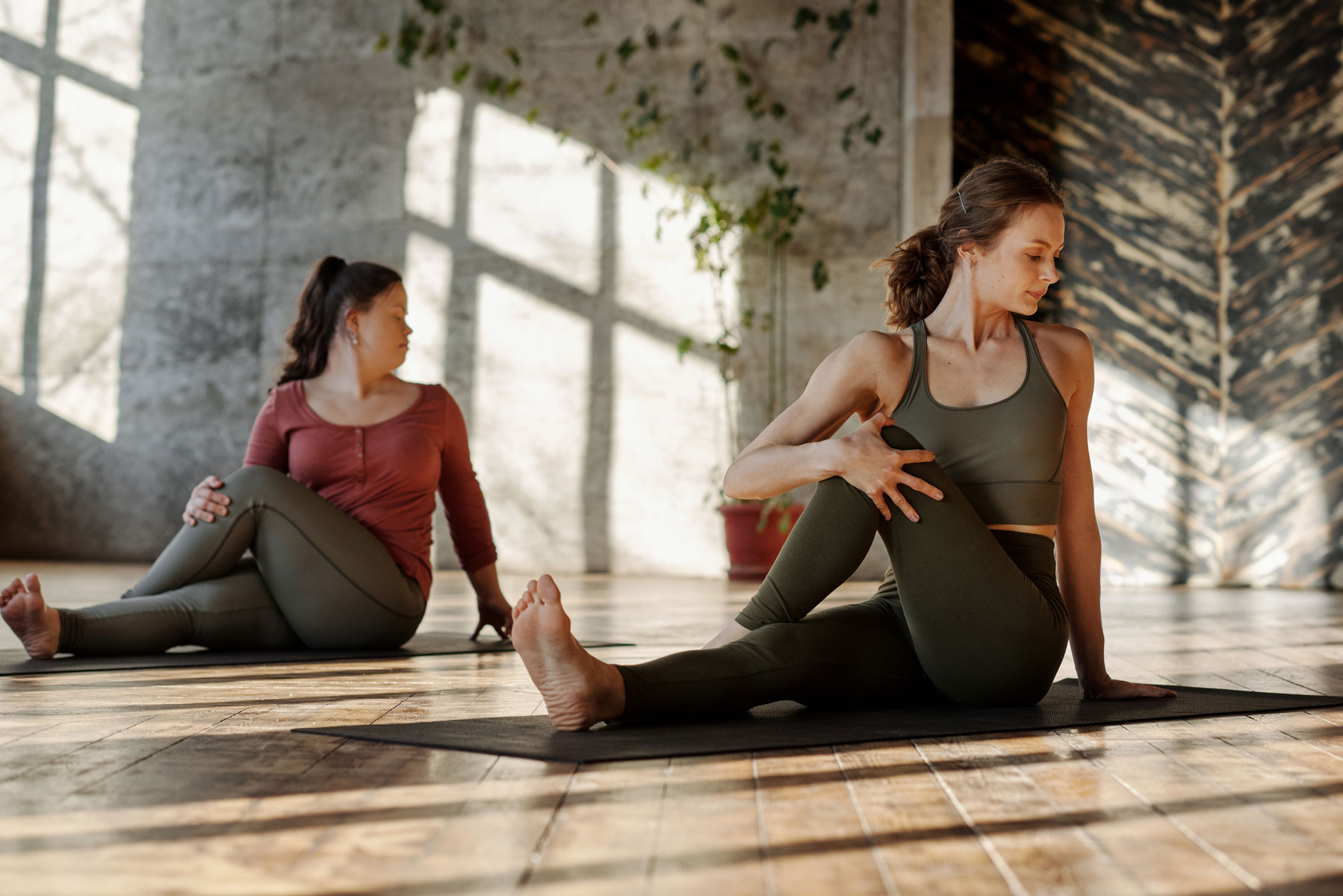
Yoga is a popular form of exercise that brings various health benefits for individuals without the usual strenuous movements involved in other workouts. Because of this, more people are starting to get into the practice of yoga. A study on the diversification of physical activities in Australia shares that yoga is among the top ten most practised forms of physical activity in the country. Further research indicates that the level of participation of US and Australian individuals in yoga are higher than in Tai Chi and Qigong, which are exercises that are similar to yoga.
Although yoga is undoubtedly beneficial for both men and women, there are some health issues that only or most women experience where yoga is advantageous. So, here are the three benefits of yoga for women:
Because yoga focuses on breathing exercises and gentle stretching, it’s one of the physical activities that pregnant women can safely perform to remain active and healthy. As a matter of fact, the discipline of prenatal yoga is specifically designed for pregnant women. It allows expecting mothers to physically prepare themselves for childbirth by helping them increase their strength and flexibility. It can also guide first-time mothers in combating the anxieties related to pregnancy: prenatal yoga teaches women breathing exercises that can enable them to relax and stay positive once they go into labour.
Some of the best prenatal yoga poses for pregnant women are the standing side stretch and the wide-knee child’s pose. These alleviate back and stomach pain while improving flexibility. However, it’s important to note that even if most women practise prenatal yoga, it’s still best to consult with healthcare professionals before performing any physical activity during pregnancy.
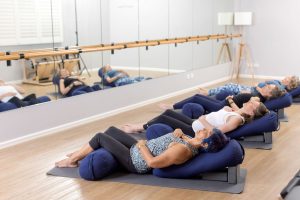
Studies on self-reported sleep quality revealed that women adults in Australia are more likely to experience suboptimal sleep, which is alarming because sleep quality is associated with other health conditions, such as obesity, cardiovascular diseases, and type 2 diabetes. Fortunately, yoga is proven to help individuals sleep better as well. In fact, one reason why people should start doing yoga is that it promotes better sleep efficiency and quality. You can experience these effects in as little as eight weeks if you practice yoga consistently. This is because the activity promotes deep and slowed breathing, which may induce people to sleep better. It also encourages individuals to be mindful of their present state, allowing them to forget any worries that may be affecting their slumber.
Some examples of yoga workouts for improved sleep include the standing forward bend and legs-up-the-wall pose. These can regulate breathing in preparation for sleeping. To further promote better sleep, consider keeping your bedroom dark and quiet and avoid consuming drinks with caffeine a few hours before bedtime.
Another health condition affecting individuals is cardiovascular disease. Indeed, a national health report on cardiovascular diseases in women finds that over half a million Australian women had one or more heart, stroke, and vascular disorders. Luckily, yoga can support women in boosting their heart health. Aside from alleviating stress, yoga encourages individuals to take deep and slow breathing exercises. Such exercises can decrease your heart rate and dilate your blood vessels to enhance your overall blood flow.
Some simple yoga routines for a healthy heart include the seated forward bend pose and the bridge pose. However, yoga should not be the sole prevention method for cardiovascular diseases. In our article on health checks last Women’s Health Week, we shared that women aged 45 and above should receive heart health checkups at least every two years. This is because you become more susceptible to such health issues as you age. That being said, while yoga is beneficial, consulting medical professionals are still necessary to help you reap the most benefits out of this relaxing yet effective activity.
Article contributed by Ruth Jentson for The Body Refinery
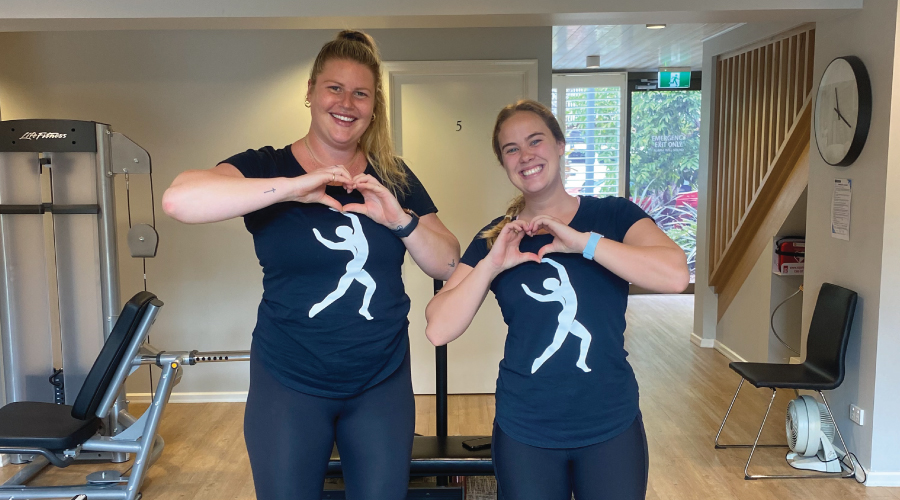
Cardiovascular Disease (CVD) is the number one killer for Australians, yet most of these deaths are preventable. Cardiovascular disease accounts for 27% of deaths in Australia. Around 1.2 million Australians have 1 or more heart or vascular conditions. CVD is an umbrella term for conditions that effect the heart and blood vessels.
Atherosclerosis is the main contributor to CVD. It is characterised by a chronic inflammatory response within tissues resulting in plaque forming on the intima layer of the arteries. Consequently, resulting in thicker vessel walls and a reduced lumen area. This is an underlying contributor to CVD because less blood can flow through the vessels and more strain is put on the heart.
The most common forms of CVD are;
Heart attack –Acute myocardial infarction, also known as a heart attack, is a life-threatening condition that occurs when blood flow to the heart muscle is abruptly cut off, causing tissue damage. This is usually the result of occlusion in one or more of the coronary arteries. A blockage can develop due to a build-up of plaque, a substance mostly made of fat, cholesterol, and cellular waste products or due to a sudden blood clot that forms on the blockage.
Stroke – The most common type of stroke is ischemic stroke. This happens when plaque or a blood clot blocks blood flow to an artery in or on the brain. Haemorrhagic stroke is less common. This happens when a blood vessel breaks open and leaks blood into the brain. A transient ischemic attack (TIA) is similar to an ischemic stroke, but the blood clot breaks up after a short time, usually before there is long-term damage.
High blood pressure> – Consistently high BP in arteries that increases the development of atherosclerotic plaque due to the increases demand on lumen walls. Hypertension = 140/90, risk factor for cardiovascular disease due to the increased myocardial demand.
Chronic heart failure: heart is unable to pump blood at a rate that is adequate for the metabolising tissue. Low stroke volume = low ejection fracture and consequently less oxygen getting to the muscles. Guidelines for the prevention, detection and management of chronic heart failure in Australia include “Participating in regular physical activity” as the number one priority for management and prevention.
Atrial Fibrillation: disorganised atrial electrical activity – rapid and irregular ventricular depolarisations. Often associated with heart failure.
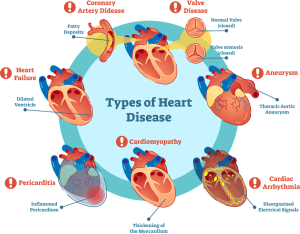
There are risk factors that can’t be changed (sex, age, and family history), but most risk factors of CVD are modifiable. These include high cholesterol (>5.5mmol/L), obesity (<24.9 BMI), smoking, high blood pressure, alcohol use (over 2 standard drinks p/d), sedentary lifestyle (>150m p/w), stress and depression.
Exercise has a favourable effect on many of the established risk factors of CVD, such as weight reduction, cholesterol reduction, increase mental health and decrease blood pressure.
Exercise Sports Science Australia (ESSA) the governing body of Exercise Physiology says that people need 150 minutes of moderate activity per week to decrease blood pressure and maintain healthy cardiac function.
Exercise benefits for cardiac and circulation – exercise increases stroke volume, increases diastolic, decreases Hr, increase myocardial perfusion (more oxygen for the muscles), lower resting levels of catecholamine, potential increases in ejection fraction, increased peripheral vasodilation. In layman’s terms – it improved exercise tolerance, vo2 peak and peripheral blood flow.
Exercise benefits for skeletal muscle – increase mitochondrial number and density, increases capillary, increases muscle fibre size and bulk, increases type 1 muscle fibres, increases oxidative enzymes, and delays anaerobic metabolism. Layman’s terms – Improved oxygen extraction, muscle strength and endurance.
Exercise benefits ventilation and others – reduced shortness of breath and perceived exertion scores, decreased oxygen demands at submaximal workloads, improved quality of life, sleep quality, mental health, and increase/maintain bone density.
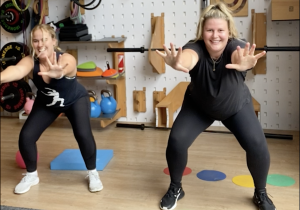
Aerobic – 11-13 RPE. Requires supervision and monitoring of HR and BP (but using RPE). 8-10 minute warm-up to reduce adverse cardiovascular effects including ST segment depression, arrhythmias, and transient LV function, increase blood flow & skeletal muscle perfusion, reduce muscle viscosity, and reduce injury risk. 8-10 minute cool down to reduce venous pooling, dizziness and post-exercise hypotension. 5 days per week.
Resistance – requires supervision, avoid Valsalva manoeuvre (as it raises blood pressure), 12-20 reps at low intensity, including 8-10 exercises. Progress intensity and reduce reps to 8-12 after 6-8 weeks of training. Heavy weightlifting of intensive and isometric nature should be avoided as it causes further increase in blood pressure. Often this can be an advertisement as most people with these conditions will be overweight and would like to hear that it would be “easy” to start off with.
Bottom line is to get exercising!!
We have a range of options here at The Body Refinery, talk to our friendly front desk.
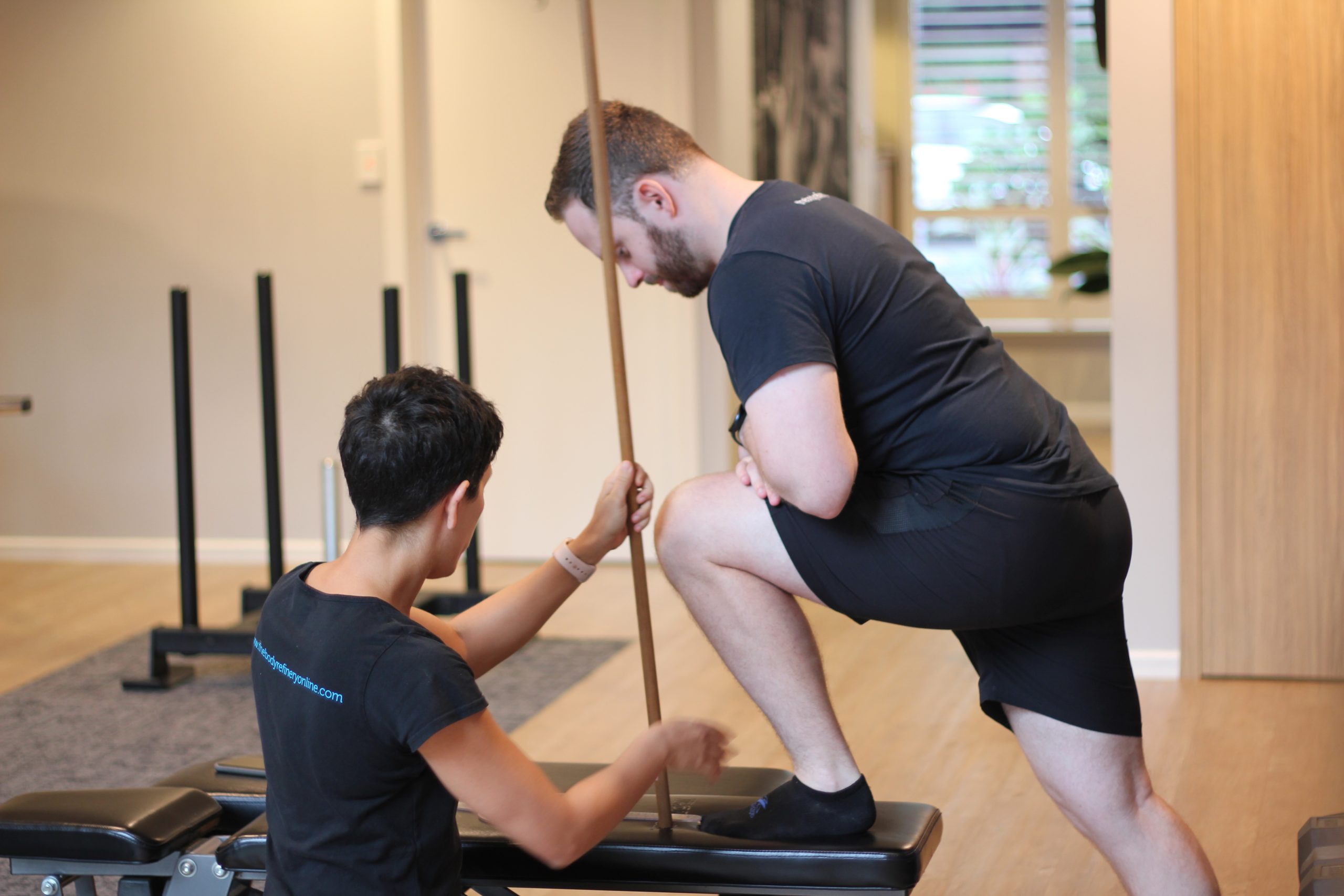
We all know that athletes push their bodies to meet their physical goals, whether it be running, swimming, cycling, competing in a triathlon or a marathon, lifting weights or playing competitive sport. These activities can place high demands on the body, particularly related to the frequency of training and competitive events. Such repetitive demands on the body can lead to imbalances in strength, flexibility and agility which can lead to poor movement patterns, causing loss of efficiency and injury.
Ideally, athletes should seek to achieve optimal biomechanics relevant to their sporting pursuits. This will assist in enhancing performance and limiting overuse injuries. In fact, 70-91% of triathlete injuries are caused by overdoing (1).
How do we achieve optimal biomechanics? By strengthening and lengthening muscles, maintaining joint mobility, correcting muscular imbalances in the body, improving functional stability and body awareness.
And Pilates is the perfect fit for attaining all these outcomes.
The essence of Pilates is control of body position and awareness of precision in movement. Pilates exercises are designed to lengthen and stabilise major muscle groups and correct muscular imbalances in the body.
With regular Pilates, everyone (athlete or not) can experience improvements in their daily performance (sporting endeavours or daily tasks) and this helps to prevent future pain and injuries from developing.
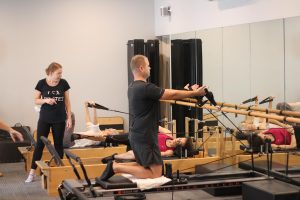
We all know we need to improve our ‘core strength’ and ‘stability’ but what does this mean exactly? For athletes such as triathletes, this means a focus on functional dynamic stability. This is the ability of the body to hold itself in better alignment for longer, even under extreme fatigue, maintaining an appropriate posture, responsiveness and efficiency of movement (2).
Exercises such as swimming, cycling and running can place high repetitive loads and demands on areas of the body such as joints, ligaments and muscles. We can attempt to balance these loads by preparing and maintaining the body with Pilates. In fact, a ‘core’ or ‘stability’ regime such as Pilates has often been referred to as the desired ‘fourth discipline’ for triathletes to improve performance and avoid injury.
Although swimming is a great full-body exercise, frequent swimming or competing can often result in pain and injuries around the shoulder girdle.
The shoulder joint is innately mobile which allows a greater range of movement but can leave it vulnerable to injury. It is said that 90% of the forward propulsive power of a swim stroke comes from the upper extremities. This continuous stroke repetition and generation of force places high demands on the shoulder joint, so optimal biomechanics and stability around the shoulder joint are required to avoid injury (3).
The body also needs to maintain alignment in a streamlined nature for optimal swimming biomechanics. Any deviation from this alignment may lead to fatigue and injury (4). For example, a swimmer who does not have adequate abdominal control and strength may show increased hip drop during the breaststroke sequence. This imbalance may consequently reduce the propulsion phase-out of the water, increasing the risk of straining muscles and joints of the neck, shoulder and back.
Regular practice of Pilates will help to improve the system of deep stabilising muscles that support and control joint motion. These muscles include the deep abdominals (transverse abdominis), pelvic floor muscles, deep muscles approximating the spine (multifidus) and deep hip rotators. Without this internal stability system, global muscle groups are required to work harder, which leads to the increased likeliness of fatigue and injury.
Similar to swimming, cycling also involves repetitive movement, which can particularly overload the hips, pelvis and spine. Pilates assists in strengthening the muscles that support the lumbar spine and helps athletes to reduce the amount of excessive movement at the pelvis – reducing shear tension through the lumbar spine.
Gluteal muscle strength and efficiency are also important for maintaining optimal knee alignment when cycling. This helps to reduce the incidence of knee pain and injuries.
Postural conditioning through Pilates is also of paramount importance for cyclists to ensure thoracic spine mobility and strength to assist in maintaining the forward postural position. Cyclists can often be known to develop neck and back pain from holding these positions for prolonged periods without appropriate conditioning.
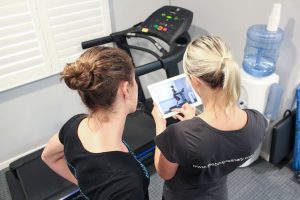
Of each of these disciplines mentioned, running has the most impact on the joints, ligaments and muscles (1). For triathletes, it is also worth considering the fatigue factor involved, after completing the two previous disciplines of swimming and cycling in a triathlon. A focus on the deep stabilising system of muscles that support and control joints is therefore crucial to reduce the risk of injury and help to maintain running technique, stability and form.
– Improved breath control
– Increased stability or ‘core strength’
– Better sense of balance
– Improved joint flexibility
– Prevention of injury
– Muscle Recovery
At The Body Refinery, we have a number of services and Health Professionals that can assist you in improving your athletic endeavours. These services include Physiotherapy, Exercise Physiology, Myotherapy, Remedial Massage and Pilates.
Our Pilates services are run by highly skilled and trained Pilates instructors who can tailor a program to suit your needs.
Our Physiotherapists also work with athletes in our Clinical Rehab classes – this service blends traditional Physiotherapy exercises with Pilates informed exercise to provide you with an individualised program to assist with your injuries and performance needs.
Or you may find our refined runner program is what you are after.
Please call our friendly reception team today on 3358 3915 to discuss how we can help you!
References
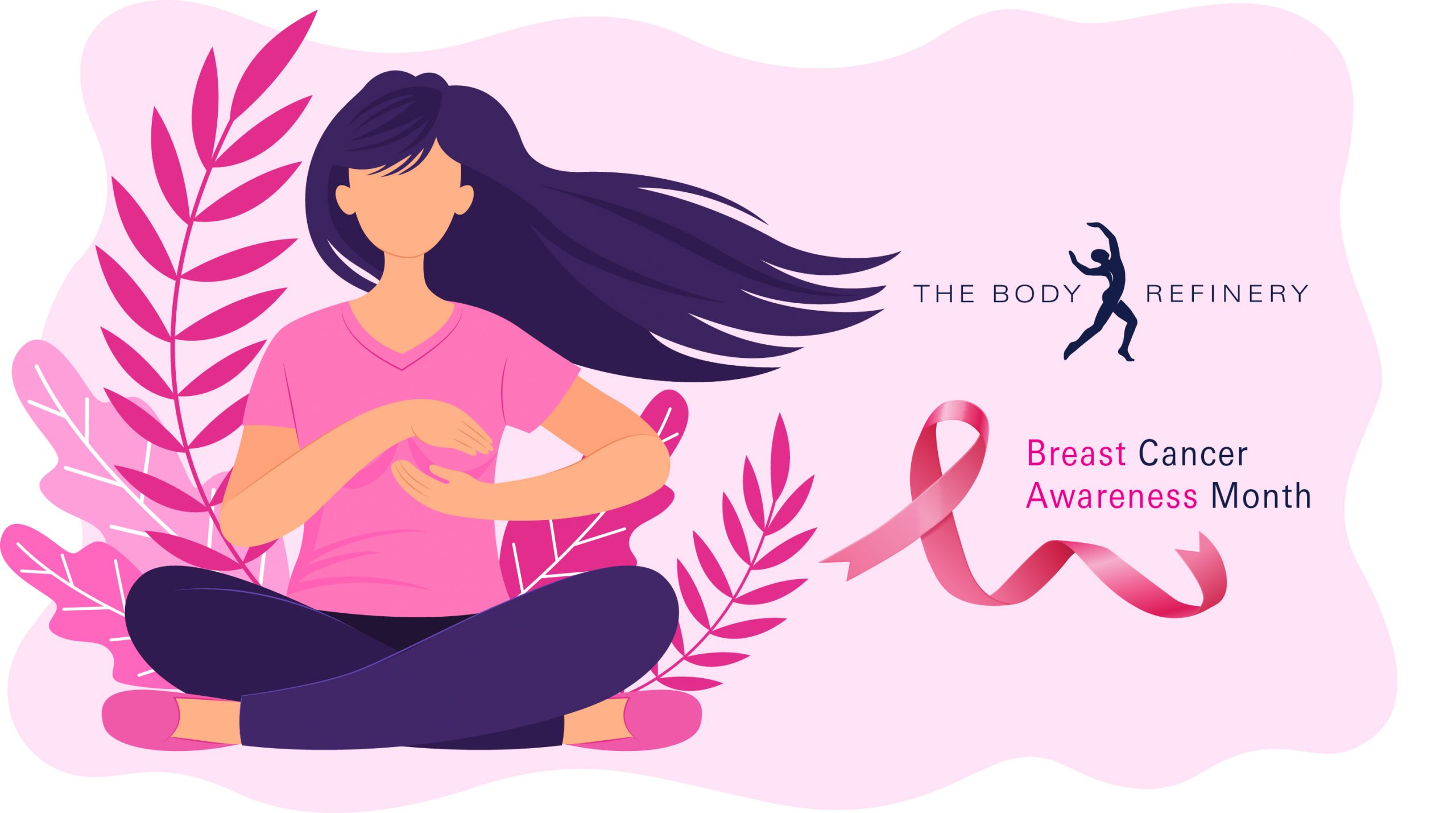
October is Breast Cancer Awareness Month. Unfortunately, we have all probably had someone in our close circles of friends or family who have had breast cancer.
The Body Refinery believes that exercise is medicine and have had the privilege of being part of the care team for a number of clients who have endured the treatment of breast cancer by helping them regain confidence in their movement and using exercise as part of their treatment in the studio.
Medical studies point strongly to the use of exercise during the treatment of, and recovery from, breast cancer. There is also strong evidence that exercise can prevent the recurrences of breast cancer.
Regular exercise during and following breast cancer treatment has many benefits. It can improve physical and emotional wellbeing and improve quality of life. Exercise can help manage treatment-related and cancer-related side effects such as fatigue, pain, lymphoedema and lowered bone density. It can also improve mood, sleep, body weight, muscle strength, confidence, depression and anxiety.
On Friday 22 October we are having a PINK DAY to raise money for the National Breast Cancer Foundation. On this day we encourage all our team and our clients to wear Pink! The Body Refinery will make a donation of $2 for every client that attends any service on the day. We will also have some great competitions for those that add to the donations and for the best pink outfits.
We look forward to seeing you on the day! Early detection of breast cancer is so important – check out the NBCF website to find out more about detection and awareness: https://nbcf.org.au/about-breast-cancer/detection-and-awareness/
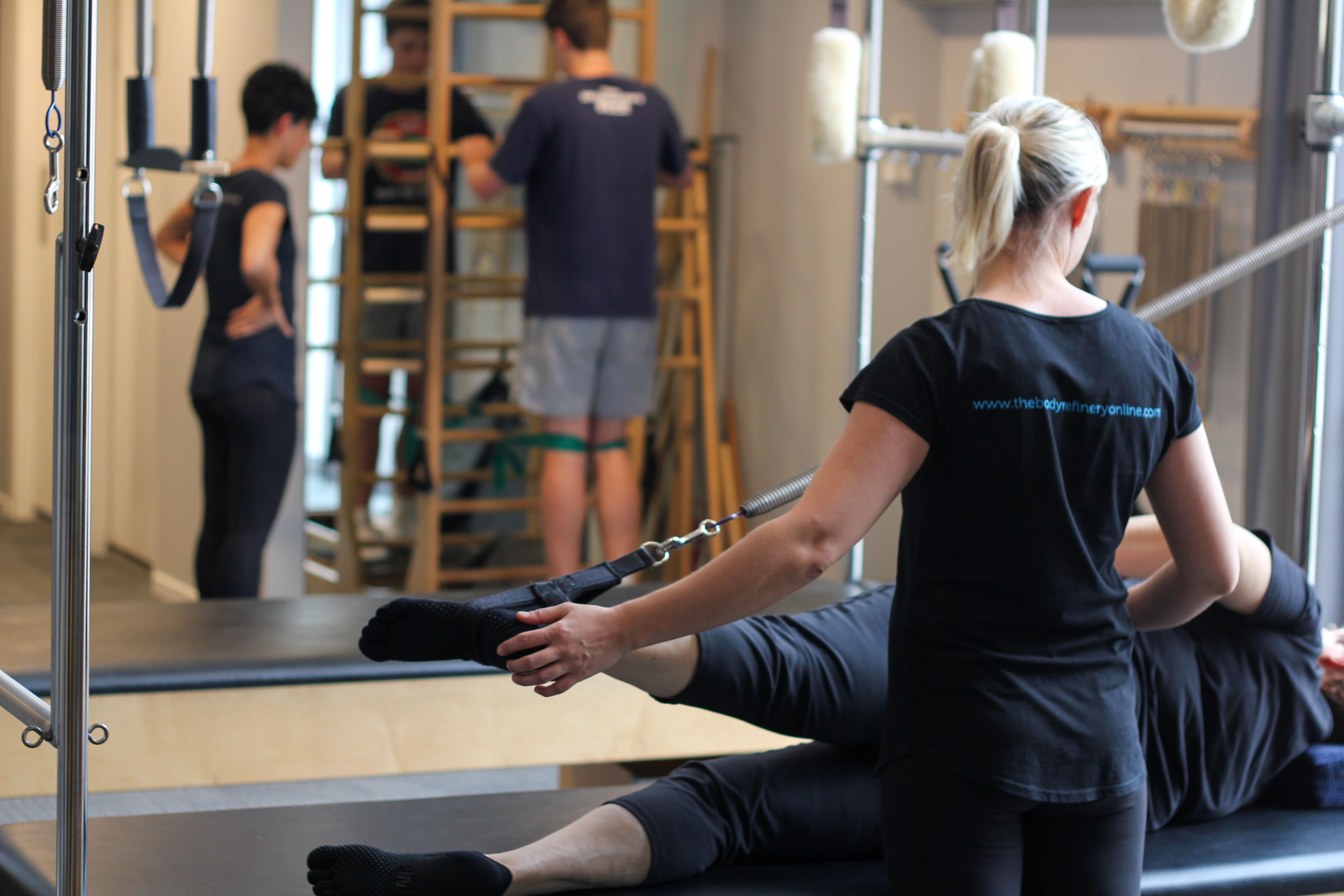
Is Clinical Rehab Pilates?
At The Body Refinery, we are pleased to offer a service called Clinical Rehab. Clinical rehab is a service that blends traditional Pilates informed exercise and other strength and conditioning principles to individualise your recovery, rehab and performance.
After completing an individualised assessment, your Physiotherapist will design a tailored exercise program for you, specifically created to address your injuries, health and movement goals and any medical conditions.
What conditions and injuries may be helped with clinical Rehab?
Clinical Rehab is a service offered to people of all ages and fitness levels, with a variety of injuries and health conditions. Such concerns as neck and back pain, postural issues, pelvic pain, women’s health issues, chronic illness as well as sporting injury management and recovery may be addressed.
Are the sessions claimable through private health?
All of our Physiotherapists have additional diploma level qualifications in Pilates training. They will utilise this background to create the most effective individualised exercise program for your needs and goals. As this service is within the accepted scope of clinical practice for the profession, the sessions may be claimable (please check with your health fund).
Will I be using Pilates equipment?
Clinical Rehab sessions involve the use of all the studio equipment. This may involve using the reformer, trapeze table, wunda chair, core align, spring resistance, free weights, exercise bands, small props and exercises on the mat. Your Physiotherapist will determine what equipment is most appropriate for your needs and goals.
How do I get started?
You will need to call us on (07) 3358 3915 to arrange a time for your Initial assessment. Your Physiotherapist may then recommend a series of individual sessions under their direct guidance until you are familiar with your program and the safe use of the equipment. Following this, you will have the option to attend a small group class, with a maximum of 4 people, where you will continue your program under the guidance of a Physiotherapist.
_ _ _
Join our Pilates community and focus on your health and mind-body connection. Create your profile or book a class now!
Follow us on Facebook, Instagram for a daily dose of Pilates and Wellbeing.
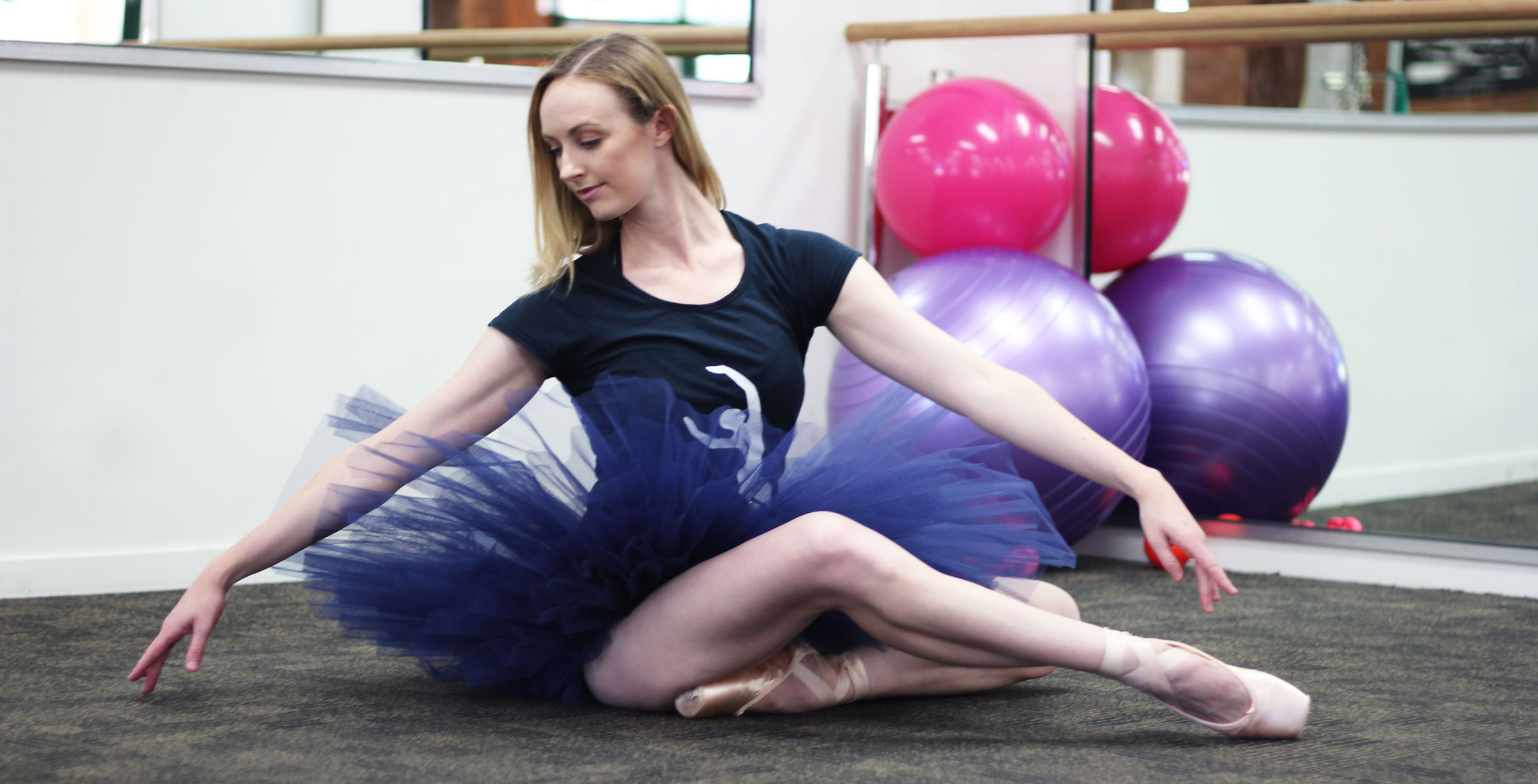
Dancers sitting in the splits or effortlessly mounting their legs above their heads are quintessential images in the dance world. While many dancers are hypermobile, others are not and have to work hard to achieve the same range of movement. They resort to stretching every day to ‘increase their flexibility’ often to no avail. If this sounds like you, then you’re not alone. You may think that holding stretches passively lengthen your muscles, but this is not the case. In fact, research has shown that static stretching (i.e. holding a stretch) for longer than 60 seconds actually inhibits the muscle. If you take this inhibited muscle into a dance class you are more at risk of injury.
That’s why, at the Australian Ballet, you no longer see dancers stretching their calves. It is all thanks to Dr Sue Mayes, the Principal Physiotherapist at the Australian Ballet. Mayes educated the dancers on the importance of not stretching their calves and introduced single leg calf raises into their daily class. Over the past decade, they have seen a dramatic decline in ankle and calf injuries. As Mayes explains, when performing, dancers are not static and do not hold passive positions. Instead, they are dynamic, moving in and out of extreme ranges of movement. To have the capacity to move into these ranges with power and control requires strength. By taking a strength-based approach, Mayes and her team found they could improve flexibility and increase range of motion in a safe and effective way.
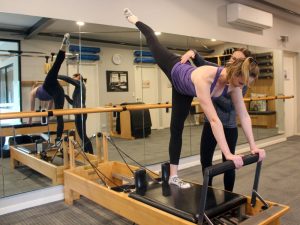
Rather than sitting in a stretch, you should take the muscle through its range dynamically. For example, you could do a slow controlled leg swing. Other suggestions include:
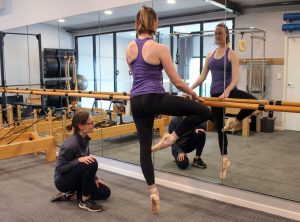
It depends on the way you do it. If you are going to stretch, it should be dynamic and not held for longer than 30-40 seconds.
If you have been working hard on your range of movement and it’s not improving, it may be time to address the reasons why the movement is restricted. This is where physiotherapy can help.
Our physiotherapist, Courtney, understands the frustration of lacking flexibility. Unable to do the splits, she used to stretch every day, with little improvement. She now loves to apply her knowledge to help dancers achieve their own flexibility goals.
Courtney can undertake a thorough assessment to determine what may be limiting your flexibility, whether it be related to:
Joint or capsular restriction
Following this assessment, she can design a tailored program specifically for you to address these areas. Courtney offers as well pre-pointe assessment to all dancers.
To book an initial assessment with Courtney, contact our friendly reception staff on 3358 3915 or info@thebodyrefinery.com.au.

Pilates is an ideal movement therapy as it moves the spine in all directions, strengthens the core and enables the movement from a stable platform. At The Body Refinery, we are passionate about movement and teaching our clients to move well.
We are fortunate enough to be able to provide our clients with a full and complete range of Pilates-based and fitness services for anyone on their movement journey. This means that at The Body Refinery we can meet the goals of anyone wanting to move for a healthy, fit and fulfilling life. But which Pilates/fitness class is for you?
These classes (described below) are run by experienced Pilates instructors and meet the general goals of Pilates – moving the spine in all directions and giving an all-over workout but not specific to address individual goals. These classes are great for someone wanting to add in a few more sessions to their routine or just add Pilates to an existing training to increase their body awareness and stability. The best choice for people who just want to move and work hard.
Enjoy unlimited access to these classes with our Totally Refined and Fitness memberships
Held on the floor on a mat everybody doing the same thing at the same time. There will be some modification made for people but individualised goals are not done in these classes. Mat classes are probably the hardest of all session as there is not supportive equipment and it is performed against gravity.
Enjoy unlimited access to these classes with our Totally Refined and Fitness memberships
Essentially the same as the Mat classes but taken on a reformer. Everyone is doing the same exercise at the same time. There will be some modification available but exercises are not individualised. However, what is really good about these classes is the reformer! Reformers have springs and pulleys that make it easier than the mat as the reformer makes a supportive environment but it also allows the ability to work with resistance for those who would like even more challenge.
Enjoy unlimited access to these classes with our Totally Refined and Fitness memberships
Our Refined Barre classes incorporate elements of dance, ballet and Pilates to create a fun-filled workout that strengthens and lengthens the body, improves balance and flexibility while increasing your heart rate.
Note:Don’t stress you don’t need to have any dance, ballet or Pilates experience! Refined Barre is more of a fitness class that focuses on continuous functional movement to help keep you feeling fit, happy and alive, all in a fun and safe setting. No tutus required!
Enjoy unlimited access to these classes with our Totally Refined and Fitness memberships
Instructed by a diploma level qualified instructor (meaning they have done full certification in both mat and equipment and their course is recognized by the professional bodies of Pilates in Australia the PAA and the APMA). These classes are great if you are wanting to really take their movement to the next level.
In these classes, you will use all the equipment in the studio: reformer, trapeze, wunda chair, barrels and mat, to address specific goals. These goals may be based on a past injury, sporting performance, injury prevention or general wellness. Our Studio Pilates classes are really tailored to a specific body and its limitations. To commence these classes an initial consultation with a physiotherapist is required so that goals can be set and a program planned for you.
Enjoy unlimited access to these classes with our Totally Refined membership
If you are injury-free and would like to challenge yourself, our new Strength and Conditioning Classes are a great way to increase your strength and fitness levels. These sessions are the perfect way to do semi-private classes in a gym setting environment with an Exercise Physiologist or Personal Trainer.
Enjoy unlimited access to these classes with our Totally Refined membership
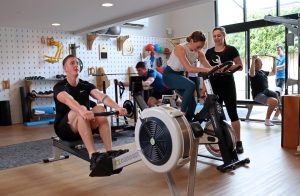
Yoga is the union of body, mind and spirit. Mindful practise cultivates deeper awareness (externally and internally) leading to a greater appreciation of each moment both on and off the mat. Our Yoga classes are the perfect way to start and end your day – join a class and see the benefits for yourself!
Enjoy unlimited access to these classes with our Totally Refined and Fitness memberships
Our TRX classes are a complete full-body workout. The TRX System, also known as Total Resistance exercises, refers to a specialized form of suspension training that utilizes equipment developed by former U.S. Navy SEAL Randy Hetrick. Tighten your core and target every muscle in your body with these classes! Experience this fitness phenomenon with high-energy today.
Enjoy unlimited access to these classes with our Totally Refined and Fitness memberships
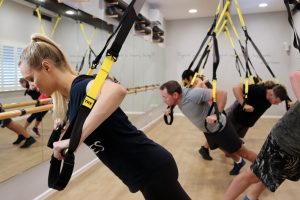
Instructed by a physiotherapist these classes are for those people who have a “condition” that needs to be monitored by a Physiotherapist to ensure their condition is properly managed. People in clinical pilates classes should be there at the recommendation of their physiotherapist. Clinical Rehab classes will move at a slower pace and Physiotherapists may use some of their manual skills in a class in conjunction with the exercises. Essentially this is a shared treatment session. Clinical Pilates classes should not be a long-term class but rather a stepping stone into studio classes where movement can really be progressed.
If you have any questions about which of our class is appropriate for you then don’t hesitate to contact us and we can give you further information – 3358 38915 or email us at info@thebodyrefinery.com.au
_ _ _
Join the Body Refinery by creating your profile today! Already part of it? Book your next class here.
Follow us on Facebook and Instagram for a daily dose of Pilates and Wellbeing.
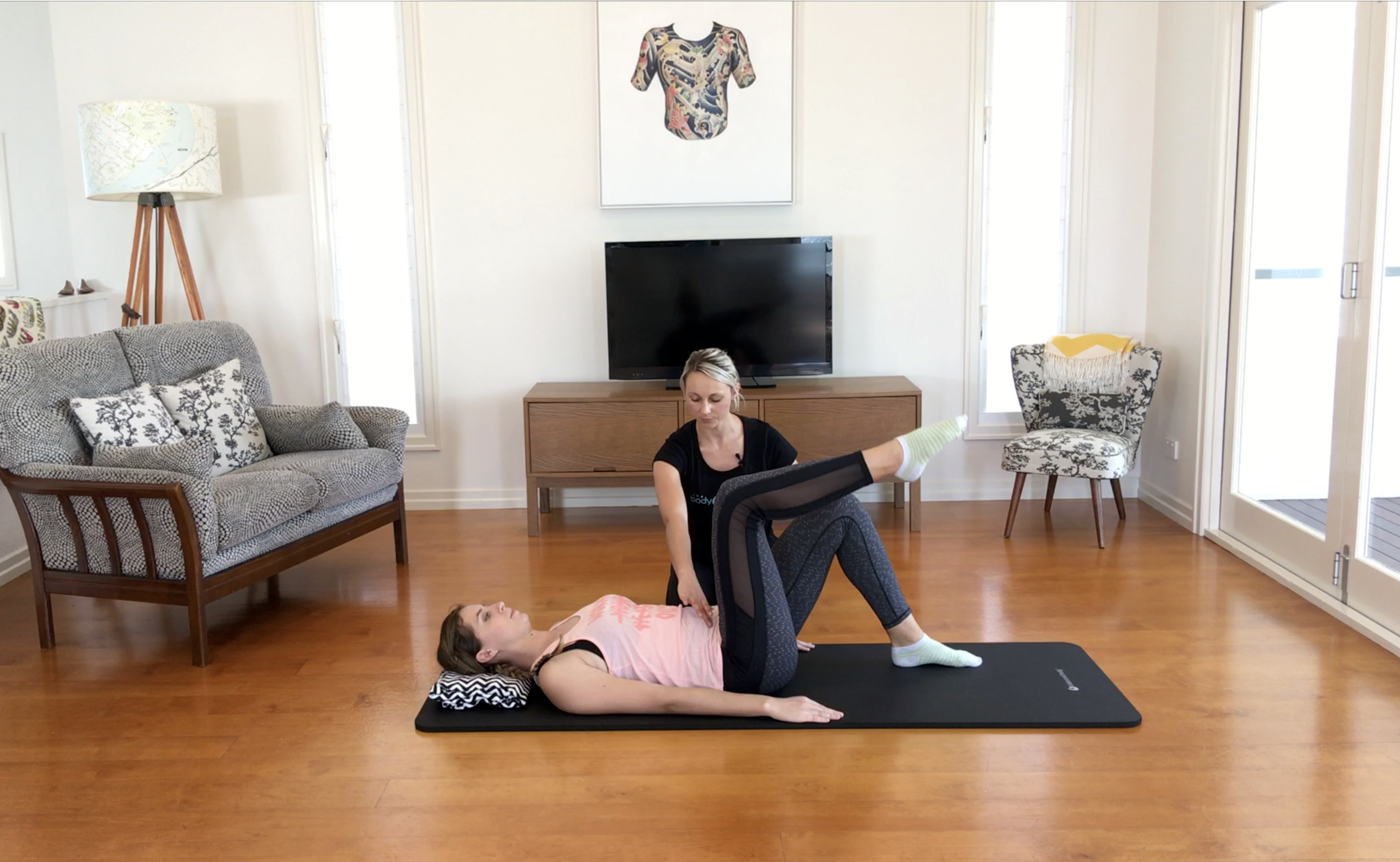
Many of us are familiar with low back pain. In fact, most people will experience low back pain at some point in their adult life, with many of those people experiencing recurrent episodes or episodes acute enough that the pain and its effects limit their activities of daily living. The cost of health care, loss of work and income can be significant, not to mention the burden of experiencing and managing this pain and how this affects our participation and enjoyment of life.
Our brain and bodies are very clever – when the brain receives messages that there is a perceived problem or pain in an area such as the back, it responds by recruiting muscles around the area to tighten and stiffen in order to ‘guard’ the body segment and those around it and to limit movement. This is a “first aid” response to create stability by locking everything down, also known as ‘spasm’ or ‘back spasm’. This can happen to varying degrees – sometimes you’re unable to move, other times there will just be increased stiffness and tightness. When this occurs, it is common to also experience secondary discomfort from the contraction and lack of circulation in the muscles, and stiffness in the joints.
The great news is that you can proactively manage low back pain. Depending on where you are in your back pain journey, we recommend a combination of hands-on treatment with your osteopath, physiotherapist, myotherapist or remedial massage therapist, along with exercise rehabilitation with your physiotherapist, exercise physiologist or diploma-trained Pilates instructor. In between sessions you can use these three simple tips anytime you’re feeling sore or stiff to keep you moving and pain-free.
Here are some gentle stretches for your hips and some release work you can do with a ball to help reduce spasm and tightness.
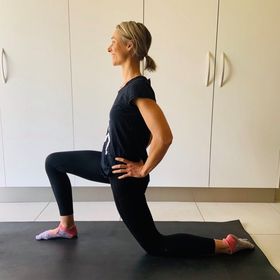
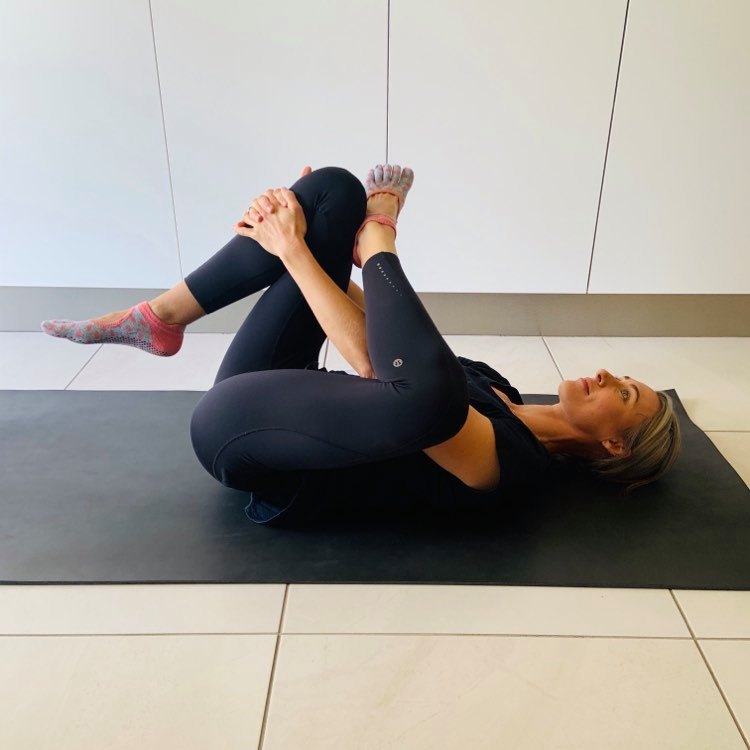
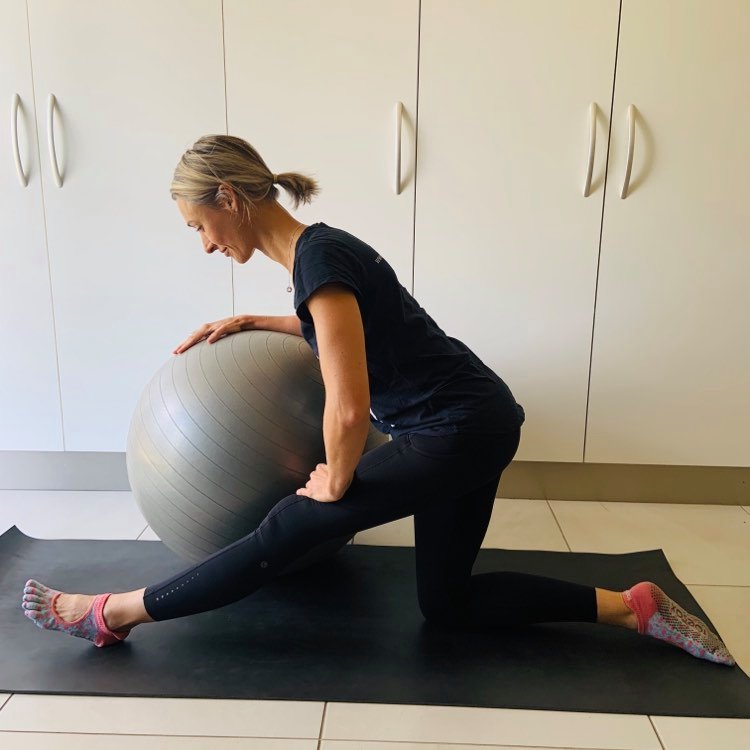
The aim here is to get the spinal segments around the affected area moving well, then gently start moving the affected segment in safe, non-painful ways. Moving your joints will help decrease tension and improve circulation in the area.
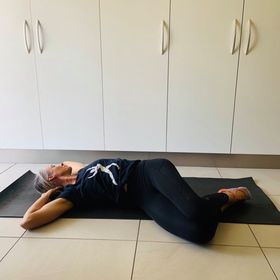
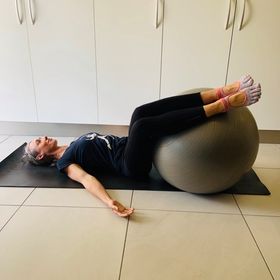
Once you’ve reduced some of the tightness and stiffness, you can do some gentle activation and stabilisation work to help support the joints and tissues, in addition to sending reassuring messages to your brain that it is safe to move. Focus on moving with your breath here.
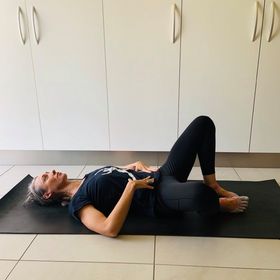
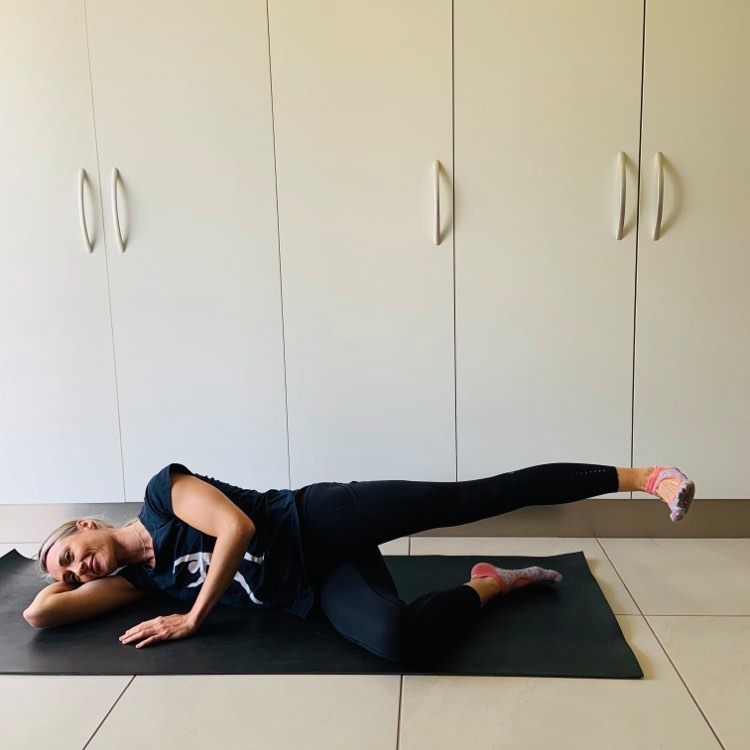
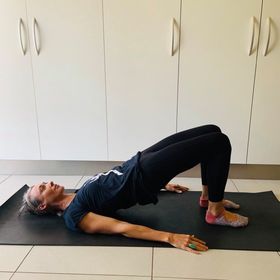
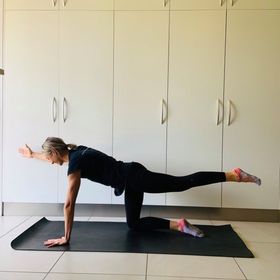
These are just a few general tips. We recommend having an assessment and receiving specific advice and guidance on which exercises and stretches will provide the greatest benefit to you, your particular symptoms, and the underlying cause of your back pain. Contact The Body Refinery for further in-person support from our wonderful health care team, who are armed with the knowledge and experience to guide you through healing, rehabilitation and prehabilitation to avoid recurrence, keep you moving well, and enjoying life.
written by Myotherapist and Pilates Instructor Sarah Holloway